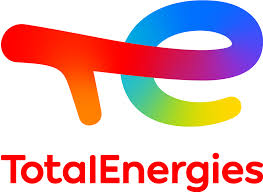· Brian Horton · LNG · 3 min read
TotalEnergies CEO Warns of U.S. LNG Oversupply
TotalEnergies is expanding its presence in U.S. LNG, but CEO Patrick Pouyanné has warned that the current wave of Gulf Coast export projects could create a global oversupply. While the company continues to invest in select developments like the Rio Grande LNG facility, it is steering clear of others it views as commercially risky. Pouyanné emphasized that not all proposed projects will secure financing or long-term buyers, and overbuilding could drive down prices and strain margins across the industry. His comments underscore a strategic shift toward disciplined, value-driven growth amid a rapidly evolving global LNG landscape.

TotalEnergies is ramping up its involvement in U.S. liquefied natural gas (LNG) projects, but CEO Patrick Pouyanné has issued a sharp warning: the wave of LNG developments proposed across the Gulf Coast could lead to a global oversupply that risks undermining project economics and destabilizing markets.
While the U.S. plays a central role in TotalEnergies’ long-term strategy, Pouyanné expressed doubt that all currently approved or proposed LNG projects will ultimately be built. Many still lack long-term offtake agreements or secured financing—two essentials for bringing large-scale export facilities online. He cautioned that the sheer volume of U.S. LNG capacity under development may outpace global demand in the years ahead, resulting in lower prices and tighter margins across the sector.
Despite these concerns, TotalEnergies continues to back select LNG ventures it sees as commercially and strategically viable. The company remains involved in the Rio Grande LNG project on the Gulf Coast, where it holds significant capacity and may participate in further expansion phases. However, it has chosen not to move forward with certain additional trains at that facility, signaling a more disciplined and selective approach to new investments.
This careful positioning reflects the company’s broader assessment of where the LNG market is headed. Although global demand for LNG remains strong—particularly in Asia and parts of Europe—there are growing concerns that new supply may come online faster than consumption can absorb it. If that scenario plays out, higher-cost or poorly structured projects could struggle to compete or even survive.
Pouyanné’s remarks come at a time when numerous U.S. LNG export terminals are racing to reach final investment decisions. While optimism about U.S. gas exports remains high, TotalEnergies is emphasizing the importance of cost competitiveness, long-term contracts, and market timing over sheer growth.
At the same time, the company continues to pursue other global LNG opportunities in regions like Qatar, Canada, Mozambique, and Papua New Guinea, all part of its effort to build a diversified and resilient LNG portfolio.
Pouyanné has also urged Europe to lock in long-term LNG supply agreements with the U.S. to ensure energy security and reduce dependence on geopolitically sensitive suppliers. However, he warned against simply shifting from one form of overreliance to another, advocating instead for a balanced, flexible approach to energy sourcing.
As the global LNG market prepares for its next growth phase, TotalEnergies appears to be steering a middle course—investing in expansion where it sees long-term value while cautioning against overbuilding that could destabilize the market. In a sector defined by massive capital outlays and long payback periods, that kind of strategic discipline could prove decisive.
- LNG Market Outlook
- U.S. LNG Exports
- TotalEnergies Strategy
- Global Natural Gas Supply